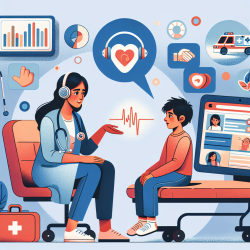Introduction
Human sex trafficking is a pervasive global issue that poses significant challenges to healthcare providers, particularly in emergency departments (EDs), where trafficked individuals often seek medical care. Despite the critical role EDs play, many victims remain unidentified due to practitioners' lack of training and standardized protocols. The scoping review by Marcinkowski et al. (2022) highlights these gaps and offers insights into improving the identification and support of trafficking victims.
Understanding the Gaps
The review analyzed 23 studies focusing on adult human sex trafficking identification, screening, interventions, and education within ED settings. It revealed a lack of validated screening tools and formal training programs, which hinders healthcare practitioners' ability to identify and assist trafficking victims effectively.
Key findings include:
- Most ED clinicians lack formal training in identifying and supporting trafficking victims.
- No consistent screening tool is available for adult trafficked patients in EDs.
- Educational interventions can enhance practitioners' confidence and knowledge in handling trafficking cases.
Implementing Educational Interventions
Educational interventions are pivotal in equipping healthcare practitioners with the necessary skills to identify and support trafficking victims. The review highlights several successful interventions:
- A 20-minute didactic training session significantly increased practitioners' confidence in identifying and treating trafficking victims.
- An interactive workshop improved participants' ability to recognize and manage trafficking cases.
- Online training modules enhanced understanding and confidence in handling trafficking situations.
These interventions demonstrate that even brief educational programs can significantly impact practitioners' ability to support trafficking victims effectively.
The Role of Screening Tools
While numerous screening tools exist, none are validated for adult patients in healthcare settings. The review discusses several tools that can be adapted for use in EDs:
- The Vera Institute's Trafficking Victim Identification Tool (TVIT) offers a comprehensive approach but requires adaptation for healthcare settings.
- The Rapid Appraisal for Trafficking (RAFT) is designed for ED use but lacks validation.
- Tools like the Polaris Project Medical Assessment Tool provide structured algorithms for identifying potential victims.
Implementing these tools requires practitioners to be familiar with the warning signs of trafficking and local resources available for victim support.
Encouraging Further Research
The findings of this review underscore the need for continued research and development of validated screening tools and educational programs. Practitioners are encouraged to engage in further research to refine these tools and interventions, ensuring they are effective and applicable in real-world settings.
Conclusion
By addressing the gaps in training and screening tools, healthcare practitioners can play a crucial role in identifying and supporting trafficking victims. Educational interventions and research are key to empowering practitioners to make data-driven decisions that lead to positive outcomes for vulnerable populations.
To read the original research paper, please follow this link: Sex trafficking screening and intervention in the emergency department: A scoping review.










